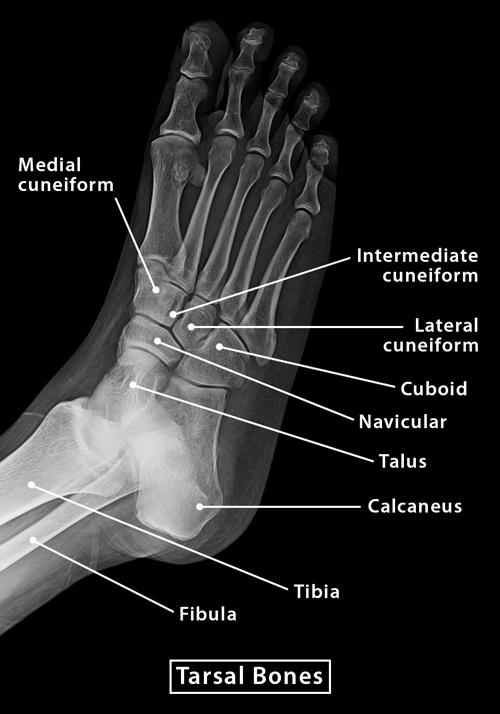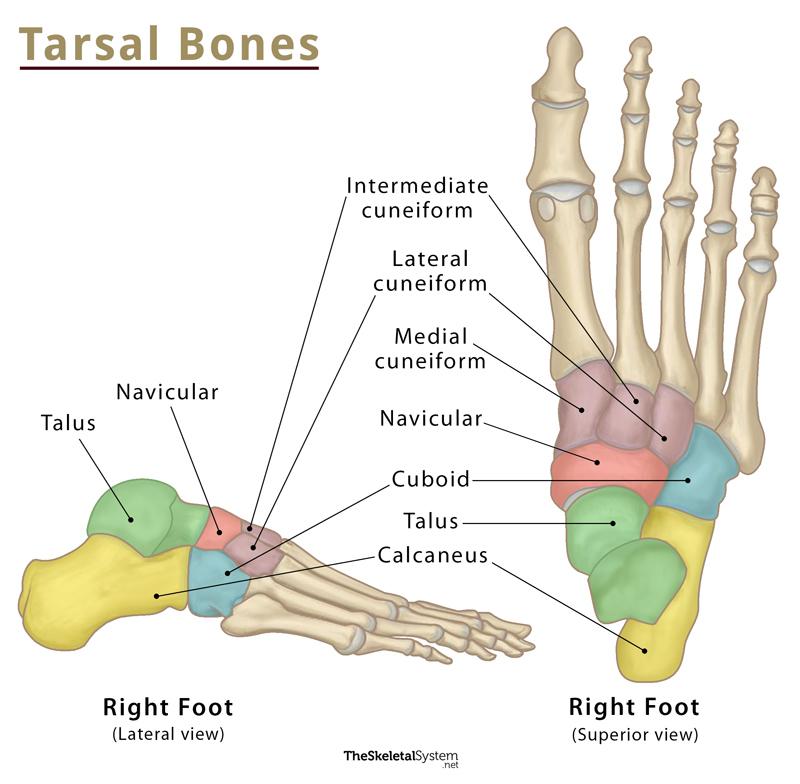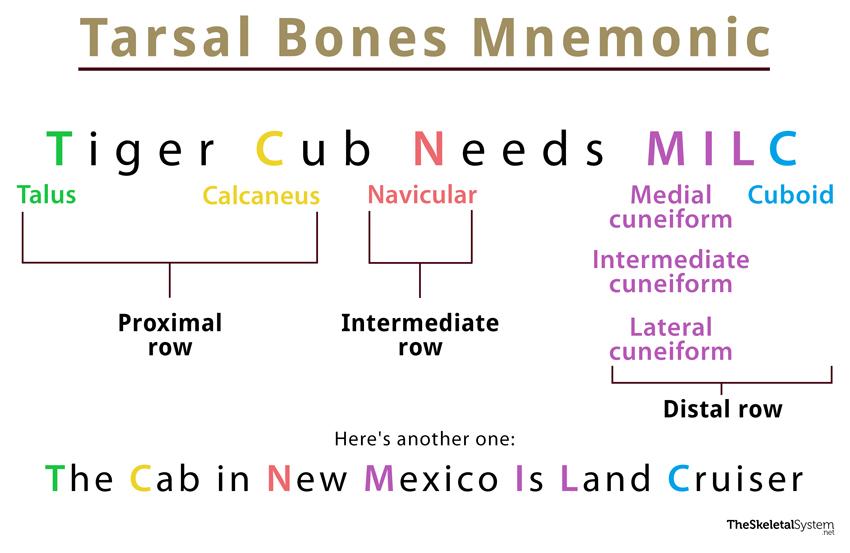Tarsal Bones
What are the Tarsal Bones, and Where are They Located
Tarsal bones, collectively known as the tarsus, are a cluster of 7 irregularly shaped bones located in the lower ends of the tibia and fibula of each foot, composing the midfoot and hindfoot.
How Many Tarsal Bones are There in the Foot
There are 7 tarsal bones in each foot, namely: talus, calcaneus, navicular, cuboid, and lateral, intermediate, and medial cuneiforms.
Functions
These bones provide mechanical support to the soft foot tissues, helping the feet withstand the body’s weight. They form a longitudinal arch, combining with other foot bones to act as a strong weight-bearing platform while standing or in motion.
Structure and Anatomy
As mentioned, some tarsal bones compose the midfoot, while some make up the hindfoot. These foot bones are organized into three rows: proximal, intermediate, and distal.
Let us now discuss the 7 bones:
Bones in the Hindfoot (Proximal Tarsal Bones)
Talus and calcaneus are the proximal tarsal bones comprising the hindfoot. They form the bony framework around the ankle and heel.
- Talus (ankle bone): It is the most superior of the lot and forms the ankle joint articulating with tibia and fibula.
- Calcaneus (heel bone): It is the largest tarsal bone lying underneath the talus, constituting the heel.
One important structure in this part of the foot is the tarsal tunnel. It is formed by the talus and calcaneus, along with the tibia. It is a passageway for multiple tendons, nerves, and blood vessels that runs between the foot and posterior part of the leg.
Bones in the Midfoot (Intermediate and Distal Tarsal Bones)
In the midfoot, the tarsal bones are again distributed into two regions: intermediate and distal. The intermediate row of tarsal bones contains only one bone, the navicular. The remaining four, i.e., the cuboid and the three cuneiforms, constitute the distal region.
- Navicular: It is a boat-shaped bone, which articulates with all the other tarsals, except calcaneus.
- Cuboid: As the name suggests, it is cuboidal in shape and located in front (anterior) of the calcaneus. It is the most lateral of the distal row, lying on the side of the little toe.
- Lateral Cuneiform: It is a wedge-shaped bone, lying most lateral of the three cuneiforms, on the side of the big toe.
- Intermediate Cuneiform: Another cuneiform bone with a similar shape, present between lateral and medial cuneiform.
- Medial Cuneiform: It is a wedge-shaped cuneiform lying in front (anterior) of the navicular bone.
Tarsal Bones Mnemonics
The following sentences, holding the acronyms of all the 7 tarsal bones, will be an easy way to remember their names.
- Tiger Cub Needs MILC.
- The Cab in New Mexico Is Land Cruiser.
Breaking the mnemonic:
T: Talus
C: Calcaneus
N: Navicular
M: Medial cuneiform
I: Intermediate cuneiform
L: Lateral cuneiform
C: Cuboid
Joints and Articulations in the Tarsal Region
- Ankle joint: Forms between the talus, and the tibia and fibula
- Subtalar joint: Present between the talus and calcaneus
- Talonavicular joint: Present between the talus and the navicular
- Subtalar or talocalcaneal joint: Forms between the calcaneus and the talus
- Calcaneocuboid joint: Present between the calcaneus and the cuboid
Carpal Bones vs. Tarsal Bones
| Carpal Bones | Tarsal Bones |
|---|---|
| Group of 8 bones | Group of 7 bones |
| The bones are scaphoid, lunate, triquetrum, pisiform, trapezium, trapezoid, capitate, and hamate. | The bones are talus, calcaneus, cuboid, navicular and three cuneiforms. |
| Join the forearm to the hand | Form the ankle of the foot |
| Arranged into two rows: proximal and distal | Arranged into three rows: proximal, intermediate, and distal |
References
- Bones of the Foot: Tarsals, Metatarsals and Phalanges – Teachmeanatomy.info
- Tarsals, Metatarsals, and Phalanges (The Foot) – Med.libretexts.org
- Tarsal bones – Radiopaedia.org
- Tarsals | Tarsal Bones Anatomy – Getbodysmart.com
- Tarsal Bone – Sciencedirect.com




